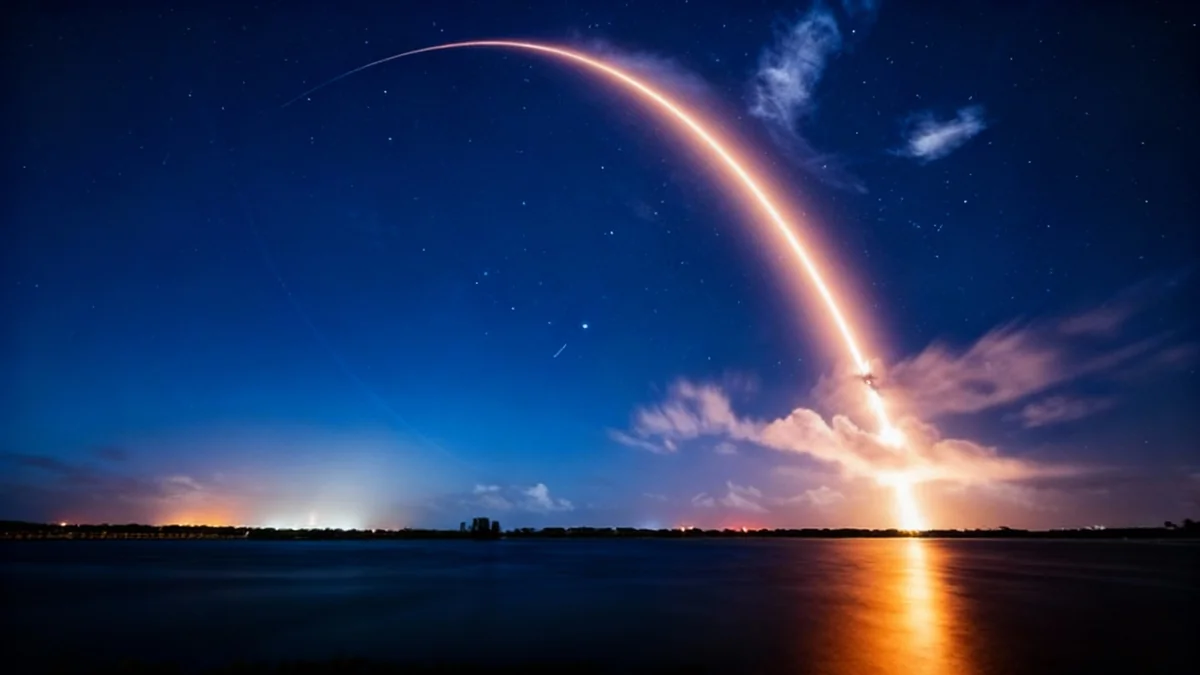A collaborative team of scientists has developed a new artificial intelligence system named Surya, designed to forecast space weather with greater accuracy. This open-source foundation model analyzes vast amounts of solar data to predict events like solar flares, which can disrupt technology on Earth and in orbit.
Developed by researchers from academia, industry, and government-affiliated institutes, Surya represents a significant step in using large-scale machine learning to understand the Sun. The model's primary goal is to provide more reliable warnings for solar storms, which pose an increasing risk to global infrastructure.
Key Takeaways
- A new AI model named Surya has been created to predict solar activity and space weather.
- It was trained on nine years of high-resolution solar images from NASA's Solar Dynamics Observatory.
- The model has already shown superior performance in forecasting solar flares, solar wind speed, and other key events.
- Improved space weather prediction is critical for protecting satellites, power grids, and GPS systems from costly damage.
Decoding the Sun with Artificial Intelligence
Scientists have unveiled Surya, an advanced AI model designed to interpret the complex physics of the Sun. This new tool was built through a joint effort involving NASA centers, universities, and the Universities Space Research Association (USRA).
Surya's development involved training it on a massive dataset. It processed nine years of solar imagery captured by NASA’s Solar Dynamics Observatory, which records a new high-resolution image of the Sun every 12 seconds. By analyzing this extensive visual history, the model learns to identify patterns that precede major solar events.
The system uses modern AI architecture, including vision transformers, to model heliophysics data. This allows it to move beyond simple pattern recognition and begin to understand the underlying physical processes that drive solar evolution. The project is open-source, allowing researchers worldwide to use and improve upon the model.
What is Space Weather?
Space weather refers to the changing conditions in space, driven primarily by activity on the Sun. This includes events like solar flares (intense bursts of radiation) and coronal mass ejections (large expulsions of plasma). When these phenomena are directed at Earth, they can interact with our planet's magnetic field and atmosphere, causing significant disruptions.
A New Tool for Forecasting
Surya has already demonstrated its capabilities in several key areas of space weather forecasting, outperforming existing models. Its applications are crucial for providing advance warnings to industries that rely on stable space conditions.
The model has shown high accuracy in four main applications:
- Active Region Emergence: Predicting when and where sunspot regions, the primary sources of solar flares, will appear on the Sun's surface.
- Solar Flare Forecasting: Estimating the likelihood and intensity of solar flares.
- Solar Wind Speed Prediction: Forecasting the speed of the stream of charged particles constantly flowing from the Sun.
- EUV Spectra Prediction: Modeling the Sun's extreme ultraviolet radiation, which affects Earth's upper atmosphere.
Dr. David Bell, Director of USRA’s Research Institute for Advanced Computer Science, highlighted the model's potential. He stated that Surya could fundamentally change how we prepare for and manage the effects of space weather.
"Surya represents a paradigm shift in how we study the Sun. For the first time, we have an AI model that has the potential to transform how we prepare for and respond to space weather events that affect everything from satellites to power grids."
The High Cost of Solar Storms
The need for better space weather prediction is not just academic; it has significant economic implications. In recent years, unexpected solar activity has caused substantial financial losses and operational disruptions across multiple sectors.
Solar storms can heat and expand Earth's upper atmosphere, increasing drag on low-orbiting satellites. This phenomenon has been blamed for the loss of satellites during launch, with damages estimated in the tens of millions of dollars in the last two years alone.
Economic Impact on Earth
Beyond satellites, space weather also affects terrestrial systems. Solar activity can interfere with GPS signals, leading to navigation errors. These errors have been linked to an estimated loss of hundreds of millions of dollars in crops in the American Midwest due to inaccuracies in precision agriculture equipment.
Power grids are also vulnerable. A severe geomagnetic storm could induce currents in transmission lines, potentially damaging transformers and causing widespread blackouts. By providing more accurate and timely warnings, models like Surya can give operators crucial time to take protective measures, safeguarding critical infrastructure and mitigating economic damage.
As humanity becomes more dependent on space-based technology and interconnected systems, the ability to forecast the Sun's behavior is more critical than ever. The development of Surya marks a proactive step toward building resilience against the inevitable challenges posed by our active star.





